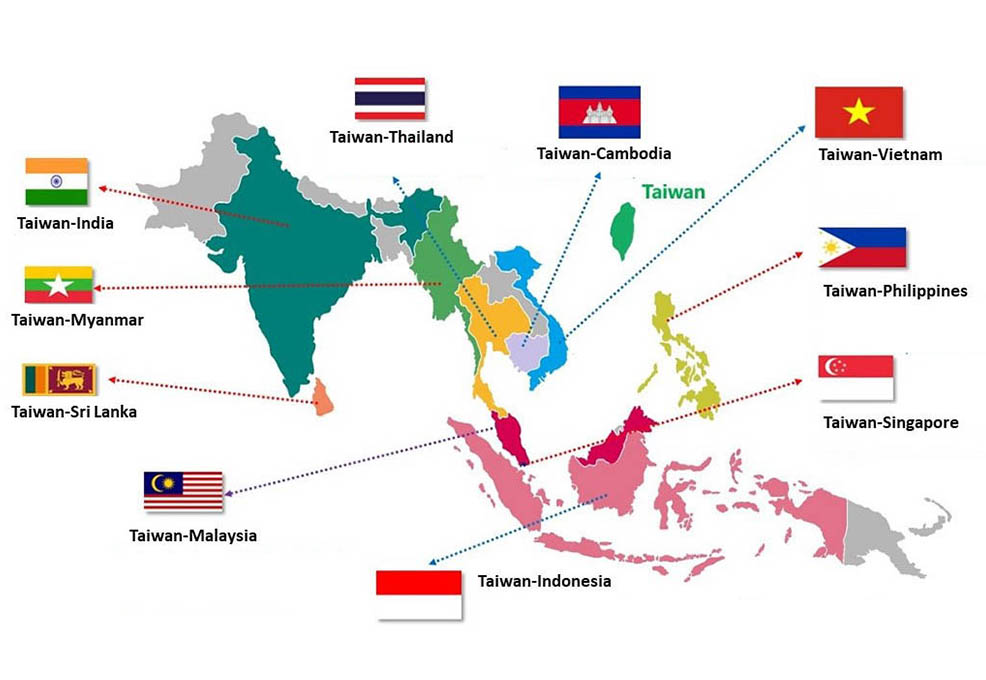Taiwan’s S&T Challenges and Opportunities in the Post Pandemic Era

- HUMANITIES & SOCIAL SCIENCES
- Text & Image
- March 18,2021
Technological progress brings with it many changes for society as a whole. In the last decade, the development and application of emerging digital technologies have caused governments and enterprises around the world to implement digital technologies, such as big data analysis, cloud computing, social media, and mobile devices, to stay in step with the times. In addition to providing more convenient service platforms, digital technology can also lessen gaps between government, industry, and the public. In respond to the global trend of digital transformation, Taiwan’s government is dedicated to developing digital transformation policy to drive transformation for Taiwan’s industries, and enhancing value in the digital economy.
The global trend toward digital transformation
In March 2020, the COVID-19 pandemic struck the world’s industrial supply chain and has completely overturned people’s established habits. To cope with such changes, governments around the world is attempting to implement expansion of basic infrastructure to speed up the rate of digital transformation for industry. This indicates that, in the future, every aspect of the society – from industry to people’s daily life – will be tied with digital technology. In fact, digital technologies, including cloud computing, the Internet of Things, artificial intelligence, 5G mobile communications, automated robots, and other forward-looking technologies needed for digital transformation were already developing at a vigorous pace before the COVID-19 outbreak. These technologies have been changing the production processes and commercial service models of traditional manufacturing.
In 2019, the US business analytics platform, CB Insights, announced top 100 AI startup companies in the world. It showed that AI technology is brining revolution to many public and private sectors, such as healthcare industry, communication industry, semiconductor industry, the government, retail industry, and financial industry. Among the 100 AI companies, there are 11 unicorn companies (a privately held startup company valued at over $1 billion) that implement AI technology in image processing, robot automation, information security, facial recognition, and autonomous cars. Moreover, global AI related patents has grown from 28,920 in 2010 to 113,353 in 2017 (sources: CB Insight, 2019; STIP, 2019). In terms of papers published, from 2015 to 2020, AI-related papers grew from 14,621 to 24,432 (source: InCites, Feb. 26, 2021). The rapid development in AI technology shows its crucial role in global digital transformation that draws attention from different sectors.
Challenges brought on by digital transformation for government and industry
Digital transformation has brought many challenges for the government and the industry, for example, how to strengthen the ability of collecting and analyzing data while maintaining data security. To measure and evaluate digital transformation difficulties in the future, OECD published the report “Measuring the Digital Transformation: A Roadmap for the Future” in 2019. In the report, OECD recommends that when facing an era of digital transformation, all countries’ governments must be well-prepared with robust systems and statistical data, as well as more open and reliable information to support governmental policy planning and evaluation.
As government and enterprise demand ever-more-systematic data analysis and precise prediction in big data, more than 37.9% of businesses have added work related to big data analysis. These works include services such as Industry 4.0 and smart manufacturing, community management, digital marketing, international e-commerce, and more. While the industry has a high demand in digital talents, more than 80% of businesses have less than 10% of digital talents in their workforce (source: Commonwealth Leader Campus, 2019).
Meanwhile, consumers’ habits have changed due to the pandemic, which has raised the awareness and need of digital transformation in small and medium enterprises (SMEs), such as retail, accommodation, and catering industry. Digital transformation in these industries can boost the development of Business 4.0. Together with blockchain technology and other digital technologies, SMEs can collaborate and share information to reach the goal of smart retail and smart manufacturing. However, SMEs have limited resources and will require government’s support on digital technology and talent cultivation. Although digital transformation has already become a global trend, challenges exist in terms of how to cultivate the needed talent. As a result, the ability to coordinate industry, governmental, academia, and research capacity in cultivating talent ready to adapt to digital development is becoming a necessary ingredient for digital transformation success.
Taiwan’s digital technology development: current status and strengths
A 2017 OECD analysis pointed out that, from 2013 to 2016, 70% of global prospective technology development came from five economies: Taiwan; the US; South Korea; Japan; and mainland China (source: OECD, 2017). In a 2020 survey and evaluation of global digital competitiveness by the Institute for Management Development in Lausanne, Switzerland, Taiwan ranked 11th out of 63 countries for digital competitiveness and the top 10 countries in the categories of Technology and Future Readiness (source: IMD, 2020). Altogether, it demonstrates that Taiwan has already deployed world-class information and communications technology infrastructure, and possesses innovative R&D capacity in digital technology.
However, Taiwan’s current digital transformation rate is behind other advanced countries. Take manufacturing industry as an example, countries such as Germany, the US, Japan, and Korea are already developing Industry 4.0, but most of Taiwan’s manufacturing enterprises are not familiar with the concept of Industry 4.0 because they are mostly SMEs. To keep up with the digital transformation trend internationally, the implementation of government policies will help drive domestic businesses to further the progression of digital transformation. In order to promote digital transformation and industrial innovation for Taiwan, the government is actively promoting the Digital Nation & Innovative Economy Development Program (DIGI+) to further perfect domestic digital infrastructure, and matching it with regulations and talent cultivation. These efforts and the collaboration between the government and the industry will help; advance software and applications for new technologies, and can benefit industries get a head start on digital transformation.
Conclusion
Facing the rapidly-changing industrial environment, it is crucial to upgrade a country’s technology and innovation competitiveness. Therefore, countries around the world are actively adjusting their national industrial development policies to promote industrial digital transformation. Meanwhile, the governments have starting to see the digital economy as the prime engine that drives national social advancement and industry transformation and innovation. With the impacts of emerging technologies, Taiwan’s government collaborates with public and private sectors to integrate existing resources and accelerate promotion of digital economy ecosystems. Currently, the government is promoting the DIGI+ 2.0 to enhance Taiwan’s competitiveness in digital technology. With a foundation built on the 5+2 Innovation Industries, Taiwan is building six core strategic industries, accelerating digital transformation, and accumulating national competitiveness for the post-pandemic era.
References:
王皓怡,〈數位轉型發展趨勢分析〉,《科技政策觀點》,台北:國家實驗研究院,2018年7月31日。
徐兆璿,〈疫情過後,論中小企業數位化轉型布局〉,《科技政策觀點》,台北:國家實驗研究院,2020年10月12日。
陳怡如,〈淺談OECD數位轉型(Digital Transformation)評估衡量行動方案〉,《科技政策觀點》,台北:國家實驗研究院,2019年7月12日。
葉席吟,〈人工智慧之全球專利發展趨勢分析〉,《科技政策觀點》,台北:國家實驗研究院,2019年10月31日。
國發會產業發展處(2019),〈數位轉型趨勢與產業創新〉,《台灣經濟論衡》,17卷2期,2019年6月1日。
熊毅晰、張育瑄,〈2019年2000大企業數位轉型與人才大調查白皮書〉,台北:天下創新學院,2019年。
IMD (2020), IMD World Digital Competitiveness Ranking 2020, IMD World Competitive Center, Switzerland.
OECD (2017), OECD Science, Technology and Industry Scoreboard 2017: The digital transformation, OECD Publishing, Paris, https://doi.org/10.1787/9789264268821-en.
OECD (2019), Measuring the Digital Transformation: A Roadmap for the Future, OECD Publishing, Paris, https://doi.org/10.1787/9789264311992-en.
STAY CONNECTED. SUBSCRIBE TO OUR NEWSLETTER.
Add your information below to receive daily updates.




